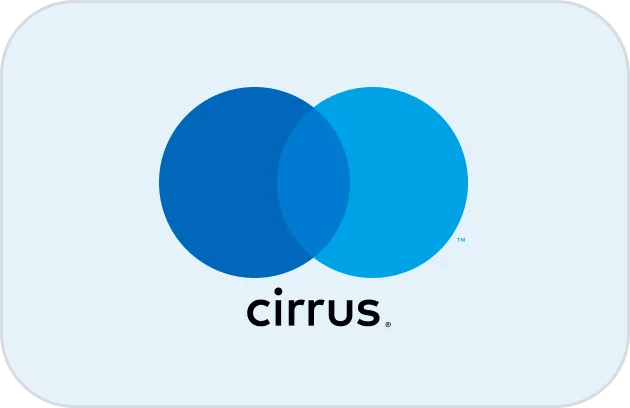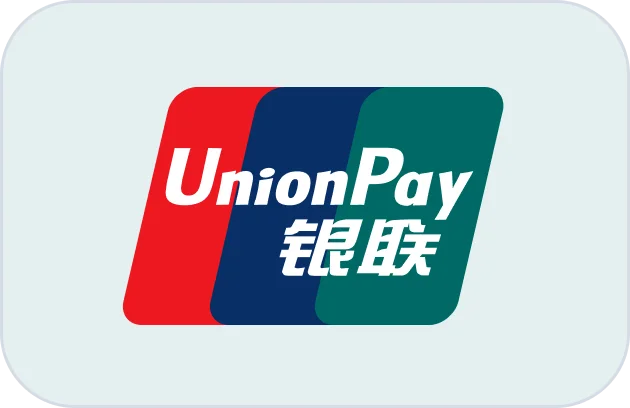Philippine BPOs compete on ruthless math: contacts/hour, promises kept, and cost per resolution. That means your platform can’t just be “feature complete.” It must be latency-tuned, agent-assist rich, QA-heavy, and SLA-honest—even at 2:00 a.m. with 1,000 seats live. This guide turns that reality into an engineering and operating blueprint that supervisors, WFM, QA, IT, and clients will trust.
1) The BPO Constraint Model: Why Speed Without SLA Truth Fails
Speed is table stakes; SLA accuracy wins renewals. If your dashboards inflate First Response or bury Abandon, client auditors will catch it. Philippine sites run multi-tenant programs with strict entitlements, language splits, and wildly different contact curves. Your software must make interval-level reality visible: backlog, ASA, Abandon, Callback Kept, and repeat within 7 days by intent and channel.
Where most stacks break: ticket systems that restart clocks when channels switch; IVRs that hide queue time inside menus; and “containment” that counts bot dead ends as success. Treat the platform like an events machine: every step mirrored to analytics with stable IDs and consistent joins. Only then can operations and finance pull the same numbers during a QBR.
When a program scales from 30 to 300 seats, survivability matters as much as features. Build on a system proven to prevent customer loss during spikes and incidents; study the patterns captured in cloud contact centre anti-churn design to keep promises under load.
2) Architecture: One Conversation Graph; Zero SLA Resets
Design around a conversation object that persists across phone, chat, email, SMS, and messaging. The SLA clock travels with it. Routing reads intent, language, entitlement, customer value, and live backlog. QA and coaching pull from the same timeline. Outcome events (Resolved, Escalated, RefundIssued, SaveClosed) give finance proof.
- Ingress: carrier-diverse SIP + verified web chat + WhatsApp/SMS + secure email ingestion.
- Routing: time-boxed stickiness to best-fit agent/team; deterministic fallbacks; windowed callbacks.
- Assist: in-moment prompts (verify, summarize, next step, policy) + knowledge as guided steps.
- Warehouse: near-real-time events stream with immutable IDs for reconciliation and audit.
Outbound BPO programs add another constraint: conversion with consent. Use pacing, local presence, and signal-driven timing—not brute force. For a blueprint that marries revenue and compliance, reference predictive, TCPA-aware outbound and extend lessons to DNC and regional opt-in regimes your clients require.
3) Reliability in Manila, Cebu, Iloilo: Edges, Carriers, and “Non-Event” Failovers
Night-shift peaks plus monsoon-season network wobble demand edge survivability. Run regional media edges, monitor MOS and jitter per edge, and shift flows automatically. Ensure windowed callbacks (e.g., 13:00–13:15) with priority re-queue at window start. Publish Callback Kept daily; target ≥95%—it’s the fastest CSAT lever in BPO.
- Carrier diversity: automatic trunk failover in seconds; record postmortems within 48 hours.
- Back-pressure: queues expand/contract by interval; low-confidence intents route to triage pods.
- Adherence: interval staffing by language; proactive alerts when occupancy breaches bands.
Multi-site Philippine programs often support global SMBs that can’t afford hardware onsite. Borrow practices from multi-office, zero-downtime VoIP to keep media local to users while routing centrally for governance.
| BPO Requirement | What “Good” Looks Like | Proof You Can Show |
|---|---|---|
| Interval-accurate ASA/Abandon | Events model, single timeline | Show SLA continuity across channels |
| Windowed callbacks (kept ≥95%) | Priority re-queue at window start | Publish daily Callback Kept trend |
| Intent routing at T+10s | Short IVR + NLP on chat/email | Confidence score → triage fallback |
| Language splits (EN/Tagalog) | Time-boxed stickiness + fallbacks | Variance report by language |
| Client entitlements | Premium/at-risk bypass general queues | Queue policy audit logs |
| AHT without gaming | Guided steps, not free-text scripts | Cohort AHT vs. FCR uplift |
| 100% QA coverage | Auto-scores + weekly calibration | Calibration pack with deltas |
| Real-time coaching | Prompts: verify, empathy, next step | Shift-over-shift AHT/FCR change |
| 7-day repeat control | Promise tracking + alerts | Repeat rate by intent channel |
| Agent click reduction | CRM/billing/logistics deep links | Clicks → AHT regression |
| Outbound pacing (compliant) | Signals + attempt caps | Consent logs + pacing plan |
| Local presence dialing | Region-aware caller ID | Contact rate delta vs. control |
| Cross-program isolation | RBAC + data residency | Audit of privilege changes |
| Multi-site survivability | Edge failover in seconds | Trunk failure drill evidence |
| Backlog honesty | No “IVR masking” of queue | IVR step time in metrics |
| Bot containment with dignity | CSAT ≥ human, clear exits | Containment vs. handoff health |
| Program-level P&L link | Outcome events to finance | Revenue/contact & saves |
| Knowledge freshness | Weekly guided-step updates | Deflection & FCR deltas |
| Audit-ready exports | Daily dumps + streaming | Immutable events snapshot |
| Client transparency | Shared dashboards, same math | One metric pack for QBR |
| WFM alignment | Interval forecast & adherence | Staffing vs. service curves |
| Security defaults | SSO/SAML, RBAC, redaction | Pen-test + redaction proof |
| Change safety | Feature flags + rollback | Change calendar + blast radius |
| Parallel PBX exit | Slice traffic; verify media | Pre/post MOS under peak |
4) Agent Throughput Without Burnout: Assist, Scripts, and Knowledge That Moves
BPO speed isn’t raw typing—it’s variance control. Replace monolithic scripts with guided steps that adapt by intent and entitlement. Use in-moment prompts for verify, empathy, next step, and compliance statements. Summaries should write wrap codes and update knowledge automatically for supervisor review. The result is faster and more consistent AHT with rising FCR.
For outbound, chase right-time reach rather than more attempts. Use behavioral signals for pacing, pair local presence with consent logs, and throttle by client rules. If your portfolio includes India or cross-APAC programs, patterns from smart local routing for India generalize well to regional dialing in ASEAN and the Gulf.
5) QA You Can Calibrate Weekly: Five Behaviors, 0–2 Scale, 100% Coverage
Trade 40-point mystery rubrics for a five-behavior, 0–2 scale your coaches can calibrate weekly: Greet/Verify, Discover, Resolve, Next Step, Compliance. Pre-score with AI so humans focus on edge cases and high-value conversations. Publish monthly variance by intent, channel, and language; adjust guided steps where gaps persist.
Tie QA to business events: track saves, refunds avoided, revenue/contact uplift from retention or expansion scripts. When agents and bots follow the same guided steps, coaching sticks faster and attrition-risk falls—critical for Philippine sites scaling new cohorts each quarter.
6) Operating Cadence for Philippine Programs: Daily/Weekly/Monthly
Daily (30 minutes): backlog by intent/channel, interval ASA/Abandon, callback kept, adherence, bot handoff health. Two routing/knowledge changes you’ll ship today (e.g., surge intent priority, guided-step fix).
Weekly (60 minutes): cohort FCR/AHT/CSAT by intent and language; one coaching clip per agent; update guided steps that failed; publish repeat within 7 days and owner accountability for promise tracking.
Monthly (90 minutes): link outcomes to client P&L: churn saves, refunds avoided, revenue/contact. Sequence next month by feature ROI and integration impact. If a client adds multi-office voice users in APAC, borrow patterns from multi-office VoIP reliability.
7) 120-Day Rollout: Pilot → Parallel → Proof (BPO Edition)
Days 1–14 — Foundations: stand up voice/chat/WhatsApp/SMS/email; verified identity; windowed callbacks; export events to the warehouse; small triage pod for low-confidence routes; change calendar with rollback.
Days 15–45 — Throughput: predictive routing live; guided steps for top 12 intents; in-moment coaching calibrated; publish daily callback kept and interval occupancy; reduce three high-friction clicks with targeted integrations.
Days 46–90 — QA & Proactive: 100% QA with five-behavior rubric; weekly calibration; anomaly alerts on repeats, sentiment drift, AHT spikes; proactive outreach on payment/delivery/outage signals; attrition-risk watchlist for ramp classes.
Days 91–120 — Business Proof: show revenue/contact lift, refunds avoided, abandon reduction; convert the heaviest voice intents off any legacy PBX; validate media quality under peak; plan next-quarter experiments (max five) and promote winners to default.
For dialing programs that must scale without compliance surprises, adopt the predictive-but-lawful approach laid out in relentless but compliant outbound; for cross-market expansion, reuse pacing and local-presence lessons summarized in India local routing.
FAQs — Philippine BPO Buyers’ Short Answers
1) How do we improve FCR without inflating AHT?
2) What’s a credible bot target for BPO programs?
3) How do we stop repeat-contact spirals?
4) Can we centralize QA across multiple languages and programs?
5) What integration order has the fastest ROI?
6) What’s a healthy day for a 300-seat site?
7) We still have a PBX in one building. How do we exit safely?
8) Which advanced topic should we master next?
BPO leadership is a discipline: honest SLAs, ruthless variance control, and survivable edges. Use this blueprint to stand up a Philippine program that clients renew. When you extend into hardware-free voice across satellite offices, the zero-downtime multi-office approach keeps your telephony simple while your operation scales.








